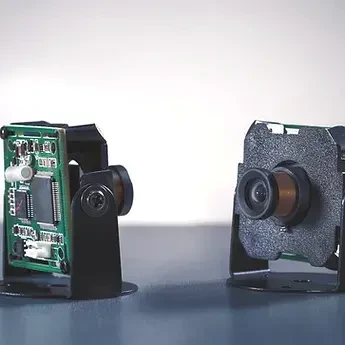As technological advancements continue to reshape the landscape of security and surveillance, the integration of ONVIF (Open Network Video Interface Forum) cameras into robotics applications emerges as a critical enhancement. These cameras provide standardized communication protocols, enabling seamless integration with various robotic systems and ensuring robust security measures across diverse environments. This blog delves into the unique benefits ONVIF cameras offer in enhancing security within robotics applications, illustrating their significance in various industries.
Understanding ONVIF Cameras
ONVIF cameras are designed to facilitate interoperability between different manufacturers and devices, enabling users to select cameras based on performance rather than compatibility concerns. This standardization promotes greater flexibility in security implementations, allowing robotics developers to choose the most suitable cameras for their specific applications. The ability to integrate various camera types ensures that robotics applications can achieve comprehensive surveillance and security coverage.
Key Features of ONVIF Cameras
-
Interoperability: The foremost advantage of ONVIF cameras is their interoperability. This feature allows devices from different manufacturers to work together, making it easier to create customized security solutions tailored to specific needs.
-
Scalability: ONVIF cameras can be easily added to existing systems without significant reconfiguration. This scalability is particularly advantageous in robotics applications, where security requirements may evolve over time.
-
Remote Accessibility: With ONVIF cameras, users can access live feeds and recorded footage remotely. This feature is crucial for robotic systems that operate in remote or hazardous locations, enabling operators to monitor activities in real-time and respond promptly to any security incidents.
-
Advanced Analytics: Many ONVIF cameras come equipped with advanced analytics capabilities, such as motion detection and facial recognition. These features enhance the security of robotic applications by allowing for proactive monitoring and alerts based on specific events or behaviors.
-
Enhanced Image Quality: High-definition video feeds provided by ONVIF cameras ensure that details are captured clearly, allowing for accurate assessments of any incidents. Enhanced image quality is particularly beneficial for robotics applications where identification and recognition are critical.
Applications of ONVIF Cameras in Robotics
The integration of ONVIF cameras into robotics applications spans various industries, including manufacturing, healthcare, transportation, and security. Here’s how these cameras enhance security in each sector:
1. Manufacturing
In manufacturing environments, robotics applications often oversee operations in potentially hazardous areas. ONVIF cameras play a vital role in monitoring these zones, ensuring that safety protocols are followed. For instance, cameras can track the movement of automated guided vehicles (AGVs) and alert operators if any unsafe conditions arise. Moreover, with real-time monitoring capabilities, manufacturers can reduce incidents of theft or sabotage.
2. Healthcare
In healthcare settings, robotic systems assist in surgeries, patient monitoring, and medication dispensing. The implementation of ONVIF cameras enhances security by providing a visual audit trail of sensitive procedures and ensuring compliance with health regulations. In case of any discrepancies or anomalies, the recorded footage can serve as critical evidence for investigations.
3. Transportation
Robotics applications in transportation, such as autonomous vehicles and drones, benefit from the integration of ONVIF cameras to enhance security and situational awareness. These cameras can monitor vehicle surroundings, detecting potential hazards or unauthorized access to restricted areas. Furthermore, they can assist in the documentation of incidents, providing valuable data for analysis and reporting.
4. Security and Surveillance
In traditional security and surveillance roles, ONVIF cameras are instrumental in monitoring public spaces and private properties. When integrated with robotic patrol systems, these cameras enable real-time surveillance, enhancing response times during security breaches. Robotics equipped with ONVIF cameras can navigate environments autonomously while streaming video feeds to security personnel, thereby increasing situational awareness.
The Future of ONVIF Cameras in Robotics
As the demand for enhanced security solutions in robotics applications continues to grow, the role of ONVIF cameras is expected to expand. Innovations in artificial intelligence and machine learning will further enhance the capabilities of these cameras, allowing for improved analytics and threat detection. The integration of ONVIF cameras with emerging technologies such as 5G will facilitate faster data transmission, enabling real-time decision-making in critical situations.
Moreover, as industries increasingly recognize the importance of cybersecurity, ONVIF cameras will adapt to address vulnerabilities associated with networked devices. Enhancements in encryption and authentication measures will ensure that the data captured by these cameras remains secure, providing users with peace of mind.
Conclusion
The integration of ONVIF cameras into robotics applications is a significant step forward in enhancing security across various industries. Their interoperability, scalability, remote accessibility, advanced analytics, and enhanced image quality make them indispensable tools for modern security systems. As technology continues to evolve, the collaboration between ONVIF cameras and robotics will pave the way for smarter, safer environments. By leveraging these innovations, organizations can fortify their security measures and ensure a more secure future in robotics applications.
To Know More About ONVIF cameras

